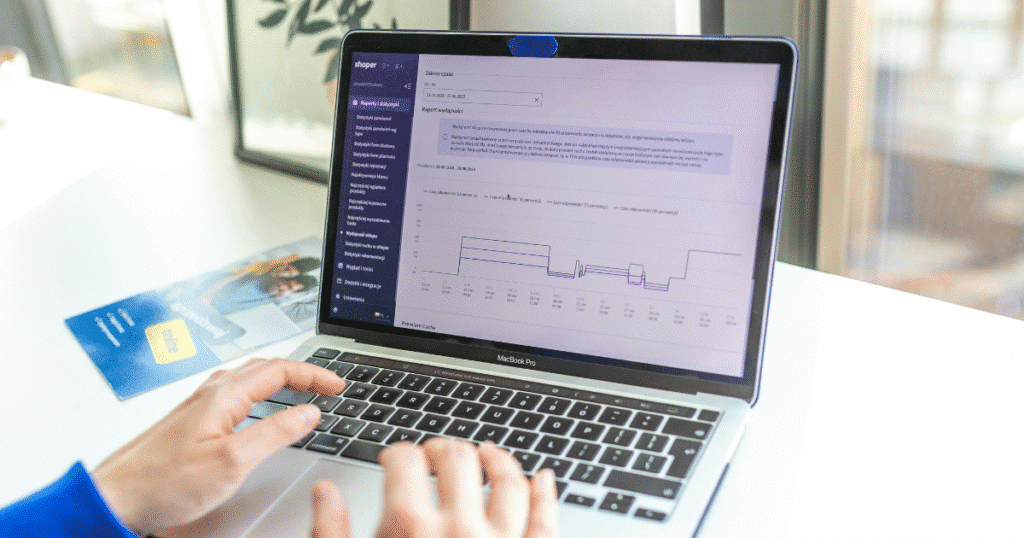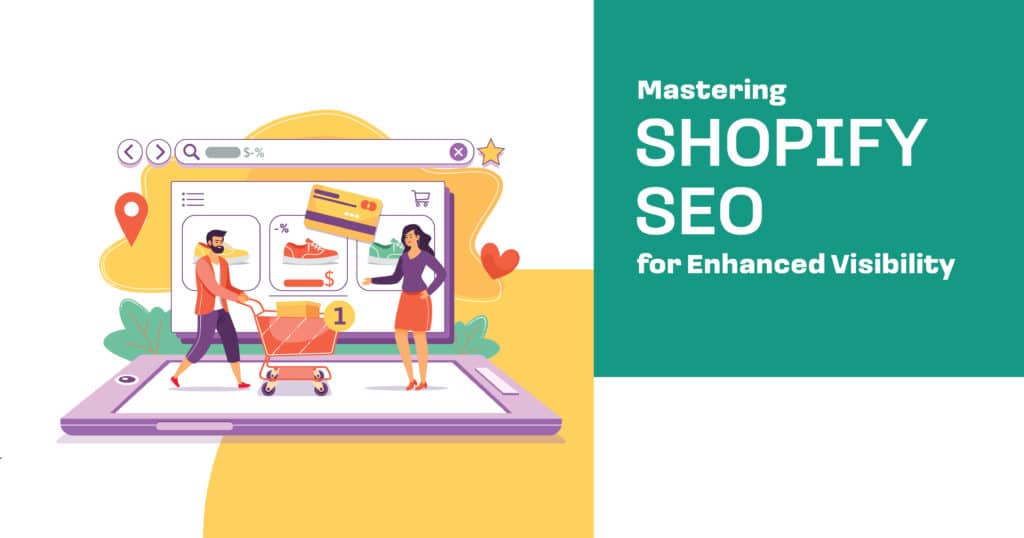Your Shopify store is live, products are beautiful, but crickets in the checkout lane? Shopify SEO transforms browsers into buyers through ecommerce platform optimization, online store ranking, and Shopify digital marketing. This blog reveals SEO for Shopify stores, Shopify search engine optimization, strategies to boost Shopify site traffic, online retail SEO, and a winning Shopify keyword strategy for maximum sales.
E-commerce Platform Optimization for Shopify Stores
Shopify’s built-in tools make SEO accessible, but optimization requires a strategy. Core practices:
- Site structure: Clean URLs, logical categories.
- Page speed: <3 seconds load time goal.
- Mobile responsiveness: 60%+ traffic from phones.
- SSL certificate: HTTPS for trust, ranking.
- App minimalism: Avoid bloat from unused plugins.
The table compares Shopify SEO levers:
| Optimization Area | Impact Level | Shopify Tool | Implementation Time |
| Site Speed | High—Core Web Vitals | Image optimization apps | 1-2 hours |
| URL Structure | High—crawl efficiency | Auto-generated, editable | 30 minutes |
| Mobile Design | High—mobile-first indexing | Responsive themes | Built-in |
| SSL/HTTPS | Medium—trust signals | Free via Shopify | Instant |
| Schema Markup | Medium—rich results | JSON-LD apps | 1 hour |
Optimizing Your Online Store Ranking on Shopify
Google ranks stores, not platforms. Ranking factors:
- Keyword-rich product titles: “Wireless Bluetooth Earbuds Noise Cancelling” vs. “Earbuds.”
- Unique descriptions: 300+ words, benefit-focused.
- Customer reviews: Schema-enabled star ratings.
- Internal linking: Collection → product → blog.
- Blog content: Educational posts drive authority.
Shopify’s SEO settings auto-generate meta tags – customize every page. The Shopify SEO best practices guide details native features.

Strategies for Effective Shopify Digital Marketing
SEO + paid = exponential growth. Integrated approaches:
- Google Shopping ads: Sync product feed.
- Retargeting: Abandoned cart recovery.
- Email flows: SEO-driven blog → newsletter signups.
- Pinterest Rich Pins: Visual product discovery.
- Influencer collabs: Backlinks + social proof.
Track ROI with UTM parameters. The table shows channel synergy:
| Channel | Primary Goal | SEO Integration | Expected ROI |
| Google Ads | Immediate sales | Keyword match from SEO | 3-5x |
| Email Marketing | Repeat purchases | Blog content CTAs | 6-8x |
| Social Media | Brand awareness | User-generated content | 2-4x |
| Visual discovery | Rich Pins with keywords | 4-6x |
Enhancing SEO for Shopify Stores
Platform-specific tactics:
- Collection pages: Optimize like landing pages.
- Blog SEO: Category tags, internal links.
- Image alt text: “blue cotton t-shirt front view.”
- Canonical tags: Prevent duplicate product variants.
- 404 management: Custom page with search bar.
Use apps: SEO Manager, Plug in SEO, Schema Plus.
Boosting Shopify Site Traffic
Traffic sources beyond Google:
- Pinterest: 80% female shoppers, long pin lifespan.
- YouTube: Product demos, how-to videos.
- Reddit: Niche communities, authentic engagement.
- Guest blogging: Backlinks from industry sites.
- Email referrals: “Share with friend” incentives.
Aim for 10K monthly visitors in year 1. The Shopify traffic growth strategies offer templates.
Creating a Robust Online Retail SEO Plan
6-month roadmap:
- Month 1: Keyword research, site audit.
- Month 2: On-page optimization, content calendar.
- Month 3: Technical SEO, schema markup.
- Month 4: Link building, social integration.
- Month 5: Conversion rate optimization.
- Month 6: Analytics review, scale winners.
Tools: Ahrefs, SEMrush, Google Analytics, Hotjar.
Developing a Shopify Keyword Strategy
Research → Implement → Measure:
- Seed keywords: Product categories.
- Long-tail targets: “best wireless earbuds under $50.”
- Competitor gaps: Tools show untapped terms.
- Seasonal keywords: “Christmas gift ideas 2024.”
- Content clusters: Pillar page + supporting blogs.
The table outlines keyword types:
| Keyword Type | Example | Search Volume | Conversion Potential |
| Head | “earbuds” | 100K+ | Low—broad intent |
| Body | “wireless earbuds” | 10K-50K | Medium |
| Long-tail | “wireless earbuds noise cancelling under $100” | 100-1K | High—specific intent |
| Question | “how to clean earbuds” | 1K-10K | Medium—educational |
Measuring Shopify SEO Success
KPIs to track:
- Organic traffic: Sessions from Google.
- Keyword rankings: Top 3, 10, 20 positions.
- Conversion rate: Sales from organic visits.
- Revenue attribution: SEO vs. paid vs. direct.
- Bounce rate: <50% target.
Monthly reviews adjust strategy. The Google Analytics for Shopify guide shows setup.
BloomHouse Marketing: Your Shopify SEO Green Thumb
When your store needs to blossom in search results, expert cultivation grows results. At BloomHouse Marketing, we specialize in Shopify SEO with ecommerce platform optimization, online store ranking, and Shopify digital marketing for maximum visibility. From SEO for Shopify stores to boosting Shopify site traffic, we’re your growth partner. Contact BloomHouse Marketing today to learn more or schedule your SEO bloom session. Watch your sales flourish.

FAQs
What are the best practices for e-commerce platform optimization to improve Shopify store ranking?
Best practices include clean URL structures, fast page speeds under 3 seconds, mobile-responsive themes, and schema markup for rich results. Optimize product titles and descriptions with target keywords naturally. Regular site audits prevent technical issues from hurting rankings.
How can effective digital marketing strategies enhance Shopify search engine optimization?
Digital marketing strategies like Google Shopping ads and email campaigns drive initial traffic that signals relevance to search engines. Social media shares create backlinks and brand mentions. Retargeting keeps visitors returning, improving engagement metrics that boost SEO.
What techniques can boost Shopify site traffic through improved online retail SEO?
Techniques include creating content clusters around pillar product categories, optimizing images with descriptive alt text, and building internal links between related products. Guest posting on industry blogs earns authoritative backlinks. Regular blog updates with seasonal keywords attract fresh crawls.
How does developing a targeted Shopify keyword strategy contribute to better store performance?
A targeted Shopify keyword strategy identifies high-intent, low-competition terms that drive qualified buyers rather than browsers. It informs product naming, collection organization, and content creation for maximum relevance. Proper implementation can increase organic traffic 50% in 6 months.
What role does SEO for Shopify stores play in increasing visibility and sales?
SEO for Shopify stores improves organic rankings, making products discoverable without paid ads – reducing customer acquisition costs. It builds trust through helpful content and reviews in search results. Higher visibility leads to 20-30% more sales from qualified traffic.









